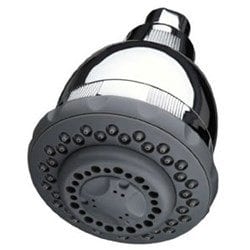Types of Bandsaw Blades
Different types of bandsaw blades serve different purposes. The wider the distance between the teeth indicates a rougher cut and is therefore used for non finish related saw cutting. The narrower the distance between blades, the finer the cut. This is ideal for finish work.
The depth and thickness of the blade determine the type of cuts that you can make with it. A thin blade is easier to cut sharp curves with. A thicker blade is ideal for straight, long cuts

Determining Band Saw Blade Size to Use
You’ll see I’ve got a wide variety of blades laid out on the table. The bandsaw offers so many different types of blades to allow you to do a lot of different cuts. Let’s start here at the small end. These are the 1/4-inch blades. This is typically the smallest that you’re going to have on your bandsaw unless you have cool blocks on the bandsaw.
You’ll see that there’s a couple of different tooth profiles here. These are all a hook tooth blade. This is a 1/4-inch blade. This is a 4 tooth per inch. This is a 6. This is a 14 tooth per inch.
4 tooth per inch will give you a nice, fast cut and a little bit of a rough surface finish. The 6 tooth will have a little bit finer of a surface finish and still give you a pretty good cut speed. When you move to the 14 TPI, it’ll have a much slower cut rate but a much smoother finish. Blades of this nature will be great for doing detail cuts, nice little curves, circles, and detail shapes. They’re great for cutting cabriole table legs, cutting out small toys and things like that.
The next size up gets into the 3/8-inch blades. The 3/8-inch blades are available in a 4 TPI as well as in a 14 TPI. The 3/8-inch blade tends to be the favorite for bowl turners. They’ll take a 4 TPI, 3/8-inch blade, and they’ll round out a bowl blank with it. It gives a little more blade stiffness and a little more beam strength than the 1/4-inch blade but not as wide as a 1/2-inch blade that lets you turn a little bit tighter here, so the 3/8 blade is a nice one for doing smaller bowl blanks. If you’re doing larger bowls, you might want to come over to the 1/2-inch.
The 1/2-inch blades drop down a tooth, and they go to a 3 tooth per inch and also a 14 TPI. Again, the 14 is going to be a slower cut, a smoother finish. These are great for a nice, gentle curve. If you’re doing a rocking chair rocker or a nice table round or a curved table apron, this is a perfect selection for that. A lot of guys find that this 1/2-inch blade lives on the bandsaw quite a bit because you can do so many different cuts with it. You can do a little bit of lightweight resawing with it. You can do some curves with it, so it spends a lot of time on the bandsaw in my shop.
When I started doing straight-line resawing, I started moving to bigger blades. The next selection up gets into the 3/4-inch blade. We’ve got a 3/4 by 3 TPI right here. Again, this is a fast-cutting blade. It also will lightly do a little bit of circles and curves, a pretty generous one, so this is going to be strictly for a table top or something of a large diameter or this will be the maximum size that some bandsaws will take. Some of the small 14s max out at a 3/4-inch, and this is the widest blade that they can take. This would be strictly for doing resaw work on those bandsaws.
The next step up, we get into the 1-inch blades. The 1-inch blade is a great blade for doing resaw work. We’ve got a couple of different selections here. We’ve got a very coarse one. This one, you’ll notice has missing teeth in there, it looks like. This is about a 1.3 TPI. With such a coarse and aggressive cutting blade, this cuts very, very fast. It’s not for a smooth finish at all. It’s something you want to use just for breaking wood down to manageable sizes.
This is also what we call an extra thin blade. When you get into the wider blades, typically you’re going to get into thicker and heavier blade stock. This is a 3 tooth per inch, and you’ll notice that the blade stock is a little bit thicker and a little bit heavier. This should not be used on 14-inch bandsaw wheels. You want to really go 16 or even a little bit larger, 18 and above typically for this blade.
The next one we get is a 6 TPI. Again, it’s a little slower cutting, a little smoother finish.
If you really want the ultimate in finish, we’re going to switch over here. We’re going to skip over the inch and a 1/4 blades. We’re going to go right to their Resaw King blade. Let’s talk about this blade for a moment here. These have the carbide-tip teeth on them. There is no set to these teeth like you’ll see on the other blades right here. All the other blades set out on the table have set to the teeth. This one actually uses a little bit thicker piece of carbide than the backing. The backing on all these blades is a nice Swedish silicon steel that gives you a great amount of flex on the bandsaw.
On this blade, we go one step further. Again, we used a nice Swedish silicon steel, and then we weld on tough pieces of C8 alloy steel on this one here. Generically, it’s called a carbide. This allows you to do a nice, smooth finish resaw cut. The other advantage to this blade is you’ll notice it has a little shoulder right behind the tooth, and that prevents you from overfeeding the blade and feeding it too fast.
The nice thing, also, about the teeth is that they are resharpenable. This blade is resharpenable. You simply coil it up, drop it in a box, and ship it back to us, and we resharpen it right on the jigs and on the machines that it was originally produced on.
Again, this is a specialty blade. If you were reclaiming wood that might have some metal in it, could have a rock or a nail or something like that in the piece of wood, stick with a much less expensive blade. Then, when you do your finished cuts, come over to the Resaw King blade.




